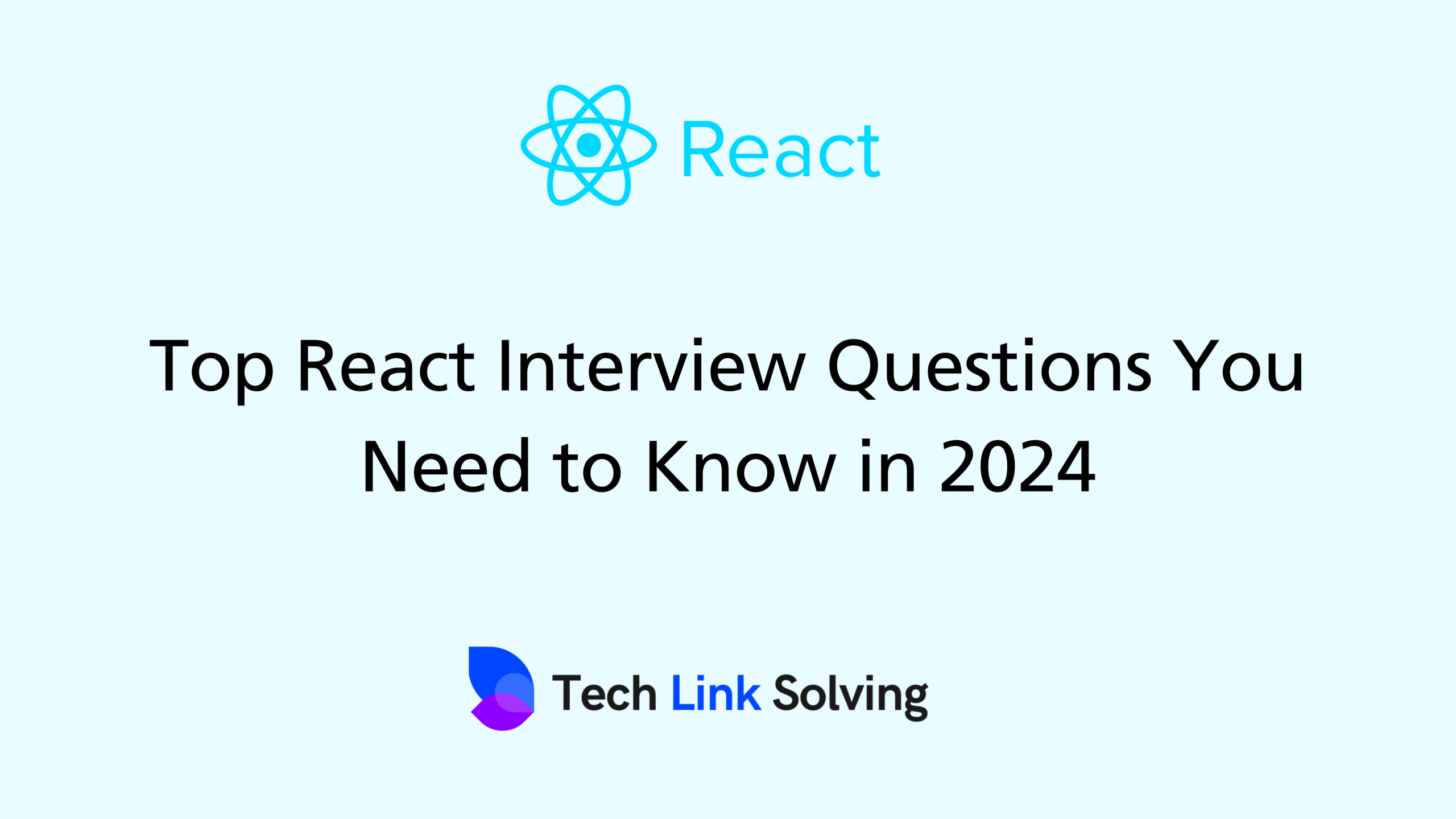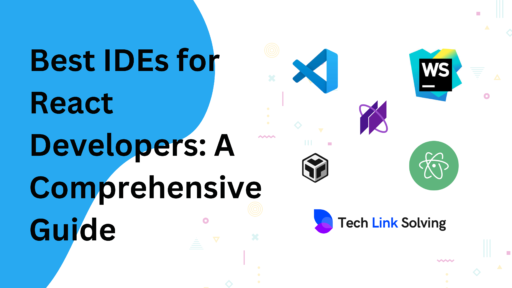Introduction
React is a popular JavaScript library for building user interfaces, especially single-page applications. Developed by Facebook, it has gained immense popularity due to its simplicity and flexibility. In modern web development, React’s component-based architecture allows developers to create reusable UI components, making code more manageable and scalable.
Basic React Interview Questions
What is JSX?
JSX, or JavaScript XML, is a syntax extension for JavaScript. It allows developers to write HTML-like code within JavaScript, which is then transformed into React elements. This makes it easier to create and visualize the structure of the UI.
Explain the Virtual DOM.
The Virtual DOM is a concept where a virtual representation of the real DOM is kept in memory. React updates the Virtual DOM first and then syncs it with the real DOM. This process, called reconciliation, makes updates more efficient and improves performance.
What are components in React?
Components are the building blocks of a React application. They are independent, reusable pieces of UI that can be nested, managed, and handled separately. Components can be class-based or functional.
Recommended by Us
- What is React? A Complete Introduction
What is the difference between a class component and a functional component?
Class components are ES6 classes that extend from `React.Component` and can have state and lifecycle methods. Functional components are simple functions that return JSX and can use hooks to manage state and side effects.
State and Props
What is state in React?
State is an object that represents the dynamic parts of a component. It is managed within the component and can change over time, typically in response to user actions.
What are props in React?
Props, short for properties, are read-only attributes passed from a parent component to a child component. They allow data to flow down the component tree.
Difference between state and props.
State is managed within the component and can change, while props are passed to the component and are immutable. State is local to the component, while props are used to pass data and event handlers to child components.
React Lifecycle Methods
What are React lifecycle methods?
Lifecycle methods are special methods in class components that allow developers to hook into different stages of a component’s lifecycle, such as mounting, updating, and unmounting.
Explain the lifecycle methods in class components.
componentDidMount: Invoked after the component is mounted.
componentDidUpdate: Called after the component updates.
componentWillUnmount: Runs before the component is unmounted.
How do lifecycle methods differ in functional components?
Functional components use hooks like `useEffect` to achieve similar functionality as lifecycle methods in class components.
Hooks in React
What are hooks?
Hooks are functions that let you use state and other React features in functional components. They were introduced in React 16.8.
Commonly used hooks (useState, useEffect, useContext)
useState: Allows you to add state to functional components.
useEffect: Performs side effects in functional components.
useContext: Accesses the context value without a wrapper.
Custom hooks
Custom hooks are functions that encapsulate reusable logic and can be shared across components.
Handling Events in React
How to handle events in React?
Events in React are handled using event handlers, which are functions that respond to user actions like clicks or key presses.
Passing arguments to event handlers.
Arguments can be passed to event handlers by wrapping the handler in an anonymous function or using the `.bind` method.
Conditional Rendering
What is conditional rendering?
Conditional rendering in React means displaying elements based on certain conditions.
Different ways to implement conditional rendering.
Ternary operators: `condition ? <Component /> : <Fallback />`
Logical && operator: `condition && <Component />`
if statements: Used inside the render method or function body.
List and Keys
How to render lists in React?
Lists are rendered using the `.map` method to iterate over an array and return React elements.
Why are keys important in lists?
Keys help React identify which items have changed, are added, or are removed. They should be unique among siblings to ensure efficient updates.
Forms in React
Handling form inputs in React.
Form inputs are handled using state to manage the input values and event handlers to update the state.
Controlled vs Uncontrolled components.
Controlled components: Have their value controlled by React state.
Uncontrolled components: Maintain their own state and use refs to access the DOM.
React Router
What is React Router?
React Router is a library for handling routing in React applications, allowing for navigation between different components without reloading the page.
Setting up basic routing.
Basic routing is set up by wrapping the application in a `BrowserRouter` and defining routes using `Route` and `Switch` components.
Nested routes.
Nested routes allow defining routes within other routes, enabling a hierarchical navigation structure.
State Management
What is state management in React?
State management refers to managing the state of an application, ensuring that data flows consistently and efficiently.
Context API.
The Context API allows sharing state across the entire app (or part of it) without passing props down manually at every level.
Introduction to Redux.
Redux is a state management library that provides a central store and a set of principles for managing state in a predictable way.
Optimizing Performance
What are some ways to optimize React app performance?
Code splitting: Load parts of the application on demand.
Memoization: Prevents re-rendering of components with unchanged props.
Virtualization: Renders only visible items in large lists.
Memoization and React.memo.
React.memo is a higher-order component that memoizes the output of a component to prevent unnecessary re-renders.
Lazy loading components.
Lazy loading components with `React.lazy` and `Suspense` helps to load components only when they are needed.
Testing in React
How to test React components?
React components can be tested using testing libraries like Jest and React Testing Library, which provide tools for rendering components and making assertions.
Introduction to Jest and React Testing Library.
Jest: A JavaScript testing framework.
React Testing Library: A library for testing React components by interacting with them as a user would.
Advanced React Concepts
Higher-Order Components (HOCs).
HOCs are functions that take a component and return a new component, adding additional props or functionality.
Render Props.
Render props are techniques for sharing code between components using a prop whose value is a function.
Context API deeper dive.
Context API can be used to create global state, avoiding prop drilling and making state management more efficient.
Conclusion
React is a powerful library for building dynamic and responsive web applications. Understanding the key concepts, from basic JSX to advanced state management and performance optimization, is crucial for acing a React interview. Practice with real-world scenarios and stay updated with the latest React features to ensure success.
FAQs
What is the best way to prepare for a React interview?
The best way to prepare is by building projects, studying key concepts, practicing common interview questions, and staying updated with React’s latest features.
How important are lifecycle methods in React?
Lifecycle methods are crucial for class components, allowing you to control component behavior at different stages. In functional components, hooks like `useEffect` provide similar functionality.
Can you use hooks in class components?
No, hooks are exclusive to functional components. Class components use lifecycle methods for similar purposes.
How does React handle state management?
React manages state within components using the `useState` hook in functional components and `this.state` in class components. For global state management, tools like Context API and Redux are used.
What are the benefits of using React?
React offers benefits like reusable components, a virtual DOM for efficient updates, strong community support, and compatibility with other libraries and frameworks.






